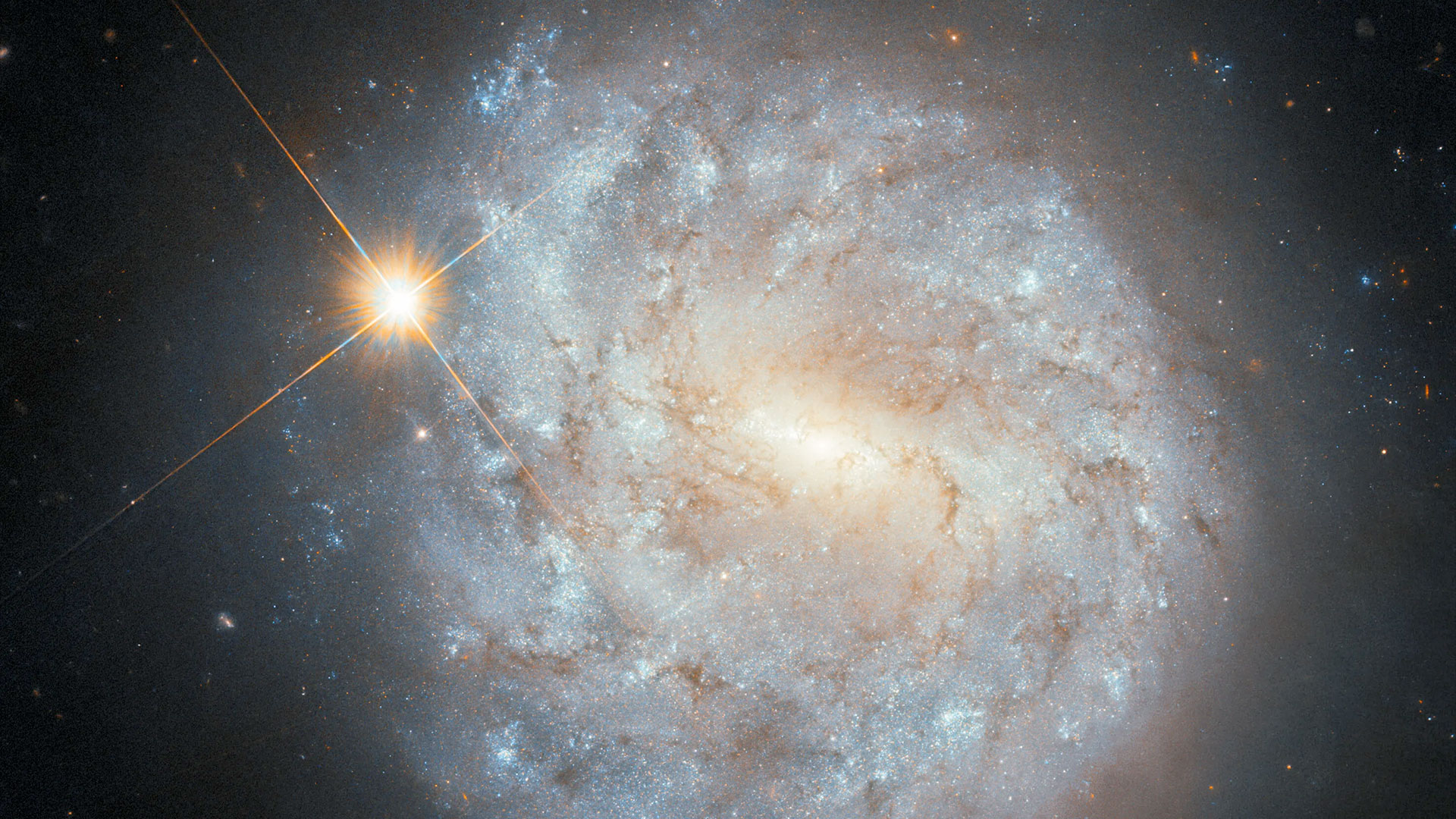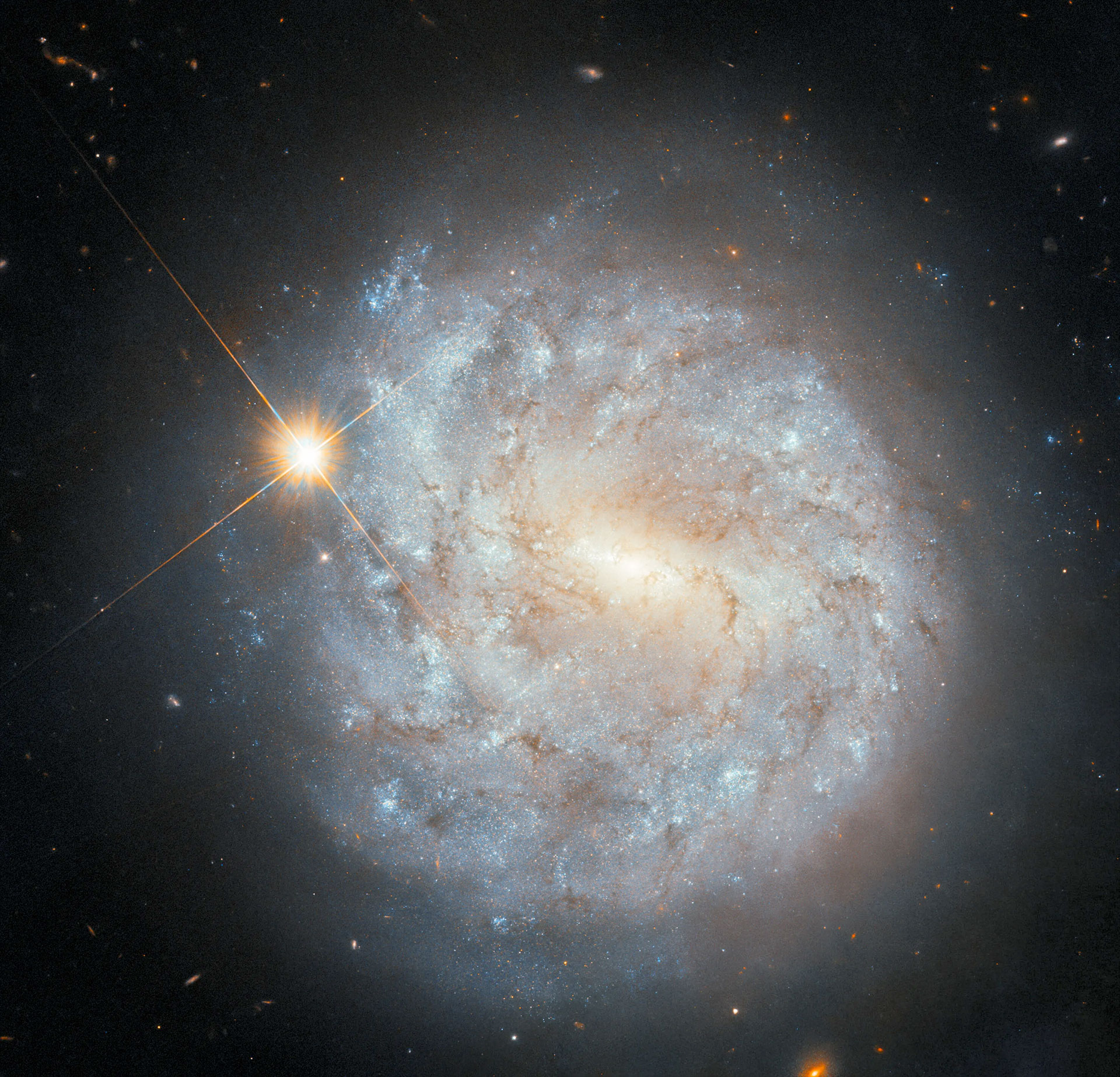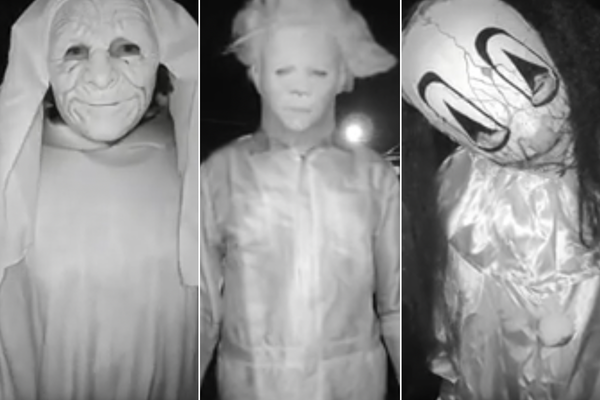
This Hubble Space Telescope image shows a spiral galaxy and a bright star, both in the constellation Virgo. The two celestial bodies appear to be close to one another but in actuality, they are far apart.
Why is it amazing?
This stunning image by the Hubble Space Telescope contains an optical illusion. The spiral galaxy, referred to by astronomers as NGC 4900, appears to be sharing space with a brilliant star.
The star, which stands out due to its prominent diffraction spikes, is in our own galaxy, the Milky Way, and is 7,109 light-years from Earth. The galaxy, on the other hand, is about 45 million light years away.
How was it taken?
The star and galaxy are not the only details separated in this image. It is also the product of two different Hubble Space Telescope instruments from two different eras of its use 20 years apart, NASA wrote in a statement accompanying the image.
The data was recorded by both the Advanced Camera for Surveys, which was installed in 2002 and is still in operation, and the Wide Field and Planetary Camera 2, which was added in 1993 and removed in 2009.

Why was it taken?
The data was collected for two different observing programs. Both were focused on better understanding the demise of massive stars, but in one, the study was aimed at the sites of past supernovas (like NGC 4900) to estimate the masses of the stars that exploded and learn more about how the powerful events interact with their surroundings.
The other program provided the foundation for studying future supernovae by collecting images of more than 150 nearby galaxies. When supernova in one of these galaxies is detected, researchers can refer to the baseline images. Identifying details in pre-explosion images can help inform the how, when and why supernovas occur.
Where can I read more?
You can read more about supernovas and the affect they had on Earth, possibly triggering two mass extinctions in our past. Or see a Hubble Space Telescope image of a rare supernova explosion.
You can also see another stunning image taken by Hubble, this one of a spiral starbust galaxy.







